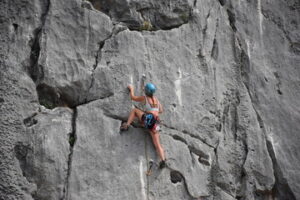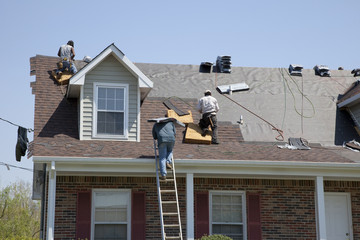Bouldering relies on powerful moves with smaller holds and requires greater grip strength, lock off strength and dynamic movement than endurance-focused roped climbing. Good grip strength is important for climbing and can be built by practicing finger-tip pinching with gymnast’s chalk.

A variety of climbing types is important for maintaining good technique. Bouldering problems range from deliciously easy to eye-wateringly hard. Read on Alta Boulders for more information.
Climbing requires a lot of physical and mental endurance. A good boulderer is able to keep their focus solely on the climb they’re trying to complete. This helps sharpen the mind and eliminate distractions, so that they can perform at their peak. Bouldering also builds the muscles of the arms and legs, which can help with overall strength and power.
Endurance is a vital part of bouldering because it allows you to climb longer routes. Climbers who can perform a route without getting too tired are able to repeat the route over and over again, which helps increase their ability to climb faster. A rock climber’s endurance also depends on their technique. If they can climb more efficiently, using less brute force to accomplish moves, their endurance will improve.
Boulderers can train their endurance by performing a number of different exercises. One exercise that is popular amongst rock climbers is called 4x4s, which involves climbing a set of four boulder problems with medium difficulty. Ideally, these boulders should be a few grades below your max climbing grade. This is a great way to get your body used to working through the pump and pushing yourself beyond what you think you can do.
Another good way to train your endurance is by setting up a series of short, high-difficulty problems. You can do this in a gym or at an outdoor spot like Van Cortlandt Park, Morningside Park, or Loony Bin. When doing this, it is important to be considerate of other climbers and not hog lane space. You also want to avoid causing too much of a ruckus and disturbing people who are trying to enjoy the outdoors.
Boulderers can also practice their endurance by doing a series of short, hard boulder problems that are 3 or more V-grades above their current climbing level. This will give them a good idea of how long they can keep going before their hands and forearms start to cramp up. This is a good training session for anyone who wants to try out a new hard bouldering route, but doesn’t want to risk injury by overdoing it too soon.
Flexibility
Whether in the gym or out in nature, bouldering requires a certain level of flexibility. This is because the climber will often bend in strange positions while trying to grab a hold or make it over a jump. It is also possible for a climber to fall while bouldering, which could result in injury if they land awkwardly.
Climbers must have good balance to prevent these types of injuries. This means strengthening postural and antagonistic muscles that may not be used as much if they only climb or boulder, and flexibility in tissues that are shortened by climbing/bouldering. This balance is important to prevent injury and help climbers become more efficient on the rock.
Flexibility is especially important when training for dynamic moves on slabs or overhangs, which require great footwork and balancing to perform. Likewise, a strong core is essential to executing dynamic moves that require extensive reaching and crimping. Exercises like planks, hollow holds, and wrist curls can be added to a bouldering routine to help build this type of strength. In addition, campusing drills and 4x4s (climbing four boulder problems back-to-back without rest) help to increase a climber’s enduring power on the wall.
Bouldering in outdoor environments can have a huge impact on the environment and wildlife surrounding the rock formations, so it’s important to be mindful of the land. Traveling on durable surfaces and avoiding trash or food scraps are both important ways to minimize the impact of bouldering. It’s also important to make sure that a boulderer has a spotter when bouldering outdoors, which will help to guide them safely through any falls and prevent them from landing in a position that could cause injury.
A spotter can also be useful in indoor bouldering, but this is not always necessary for outdoor bouldering. Regardless of the location, boulderers should try to avoid lane hogging, which can detract from the experience of other climbers who are also trying to work through a problem. Bouldering is a social sport after all, and being considerate of others will only enhance the experience for everyone.
Strength
Bouldering is a great full-body workout that requires the use of many muscles in your arms, legs and core. It also helps improve balance and flexibility. It is important to stretch before and after a bouldering session, to avoid injury. Common bouldering injuries include finger ligaments, tennis elbow, dislocated shoulders and broken ankles. Injuries can be avoided by warming up properly, using the correct technique and wearing appropriate equipment.
It takes a lot of strength to complete a bouldering problem, especially at an elite level. In a recent study, rock climbers who trained regularly were found to have greater maximal and explosive strength than those who did not train as regularly. However, no difference in forearm muscle endurance was observed between the two groups. These findings suggest that the increased power output required for bouldering is likely due to specific training rather than differences in muscle-tendon stiffness or firing rate.
Getting to the top of a bouldering route can be quite challenging and requires a good deal of planning and thought. It can be fun and exciting and a great way to relieve stress and leave your mind clear and refreshed at the end of a session.
Bouldering problems are rated by their difficulty using the V scale (V0 being easiest and going up to, last time we checked, a route at V17 called Burden of Dreams). Generally, the harder the problem, the more difficult the movement required to complete it.
In order to do a problem, you will need to wear climbing shoes, which are specially designed for comfort and grip on the walls. You will also need a crash pad to cushion falls. Finally, you will need a belay device, which is a rope that connects the climber’s harness to the climbing wall. Carabiners, which are lightweight metal rings that can be used to clip the climbing rope into the belay device and the climber’s harness, are a must.
A chalk bag holds chalk, which is rubbed into the hands to reduce sweating and improve grip on the wall. There are different types of chalk, some that help with friction and others that can be used as a skin-drying agent. You will also need a pair of climbing gloves, which are designed to offer the best fit for your hands.
Coordination
Whether you’re an outdoor boulderer or a boulderer at the gym, you need to be able to coordinate your feet, legs and arms. The more coordinated your body is, the better you can move and the more effective your movements will be.
Climbing requires coordination that’s different from most other sports. For example, the sport requires you to use your feet to find holds and toe hooks to climb up a wall. It also requires you to balance on a small hold with your hands, and it can require you to perform a “reverse dyno,” jumping off a high spot and swinging down to a far-off hold with the help of momentum.
Many people who practice climbing get injured, whether they’re beginners or expert competitors. Finger ligaments, ripped muscles and tendons, broken ankles or cuts and bruises from sharp rocks are all common injuries. But even experienced boulderers can suffer from a painful injury like a torn biceps muscle.
The key to preventing these injuries is proper warm-up and recovery. Climbers should be sure to stretch out and get enough sleep and food before a session of bouldering. Additionally, boulderers should have a partner to spot them if they fall, especially if they’re trying a hard problem. Having one or more spotters will increase their safety and give them the opportunity to try a new route or problem more than once.
For indoor and outdoor bouldering, participants must bring big soft pads, known as crash pads, to protect themselves from a fall. It can be dangerous and time consuming to carry these pads to bouldering locations, so it’s important for boulderers to plan ahead. It’s also important to have a plan for recovery after a difficult bouldering session.
In the sport of Bouldering, athletes are given four minutes to complete a boulder problem, or set of movements on a rock face. Athletes don’t know the exact difficulty of a problem before it is presented, so they must quickly assess their skills and the requirements of the problem. They’re not allowed to use phones or other devices that can connect them with the outside world during the competition, so they must rely on their perception of the environment to determine if they have made a successful movement.

